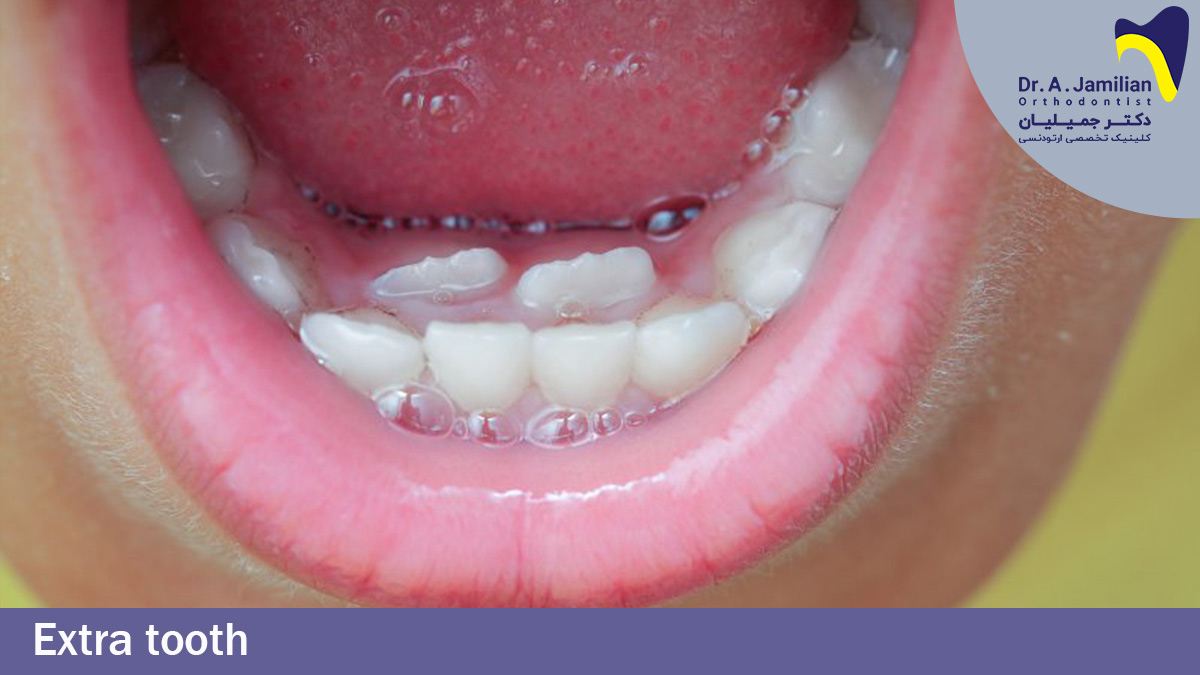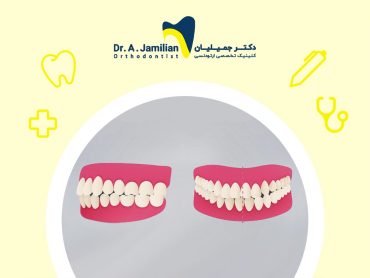A common case; you may have heard about is missing teeth. The opposite case is seen in some people who have teeth causing some disorders like missing teeth. When there are more teeth than the standard number in the mouth, the teeth are considered abnormal teeth, and the case is known as Hyperdontia. Only 1-4% of the world’s population suffers from this disorder.
In some cases, the patient may have one or more teeth in the jaw, which is literary called supernumerary or known as the medical term “Hyperdontia.” The extra teeth present in the anterior region of the maxilla are called Mesiodens, which is more precisely defined herein.
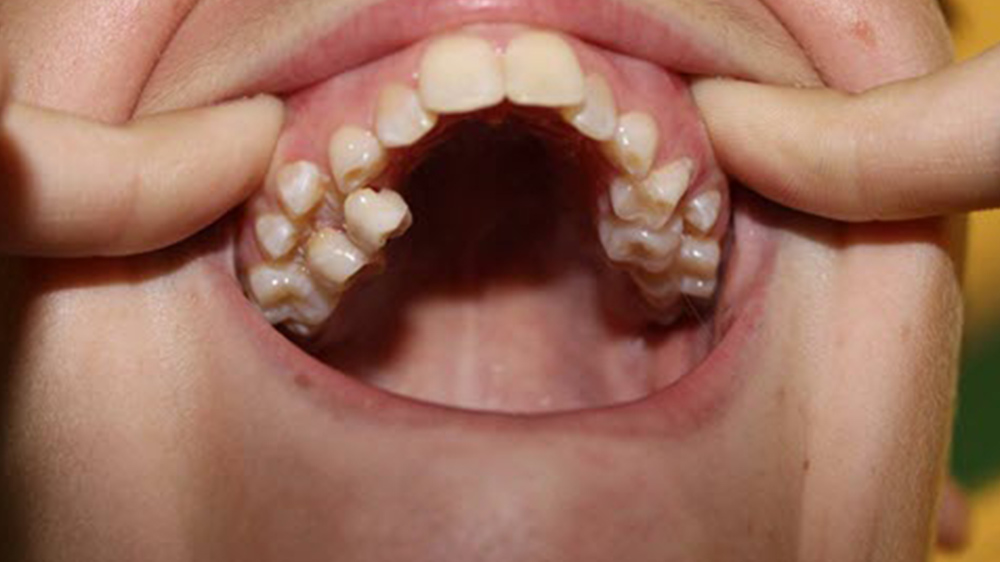
It’s no secret that having extra teeth barely affects the population. While it may not affect you directly; it’s good to know men experience Hyperdontia two times greater than women.
Cause of Hyperdontia
In simplified terms, Hyperdontia can be caused by various factors. Numerous causes play a role in extra teeth appearing some of them are as follows:
• Cleft Lip and Palate at the birth of the child.
• Gardner Syndrome is a kind of genetic disorder leading to gland growth and accumulation in some parts of the body.
• Genetic disorders present in the face and teeth of the child
What are Mesiodens teeth?
Mesiodens teeth are supernumerary teeth often growing with a conical shape in the upper jaw between two central incisors. Note that these types of teeth are in a hidden form. They are detectable just through examination of other teeth and radiography images.
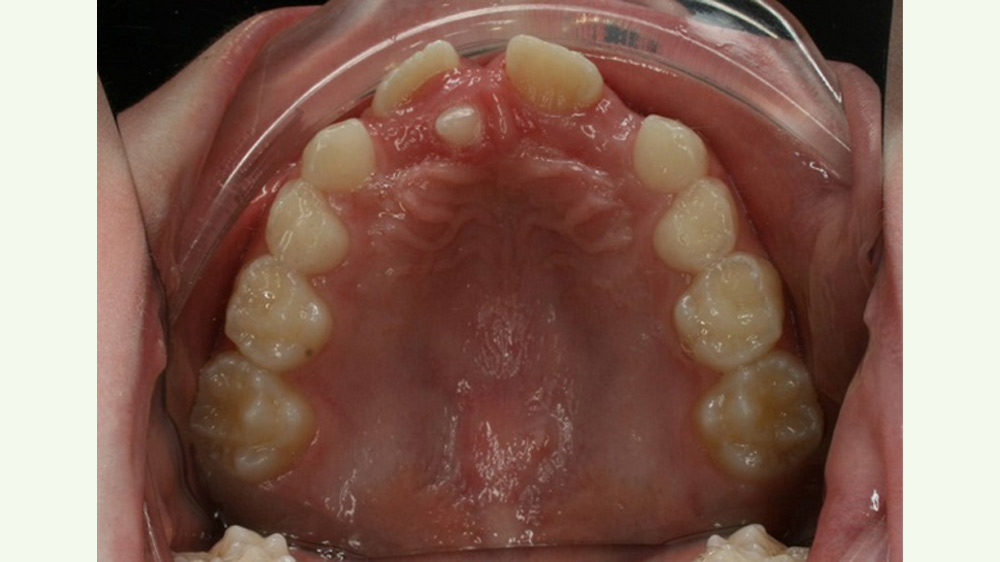
Disadvantages of Hyperdontia
Regarding supernumerary teeth, it’s causes are above. In the following text, we will explore the disadvantages and consequences of hyperdontia in detail:
- Interfering with growth and order of main teeth: undoubtedly, the most critical problem resulting from hyperdontia is a disorder in the growth of other primary teeth of the child. Also, other teeth may grow slowly due to the pressure caused by the space occupied by extra teeth. On the other hand, teeth order is disturbed due to high pressure leading to timely and costly treatment and correction of irregular teeth.
- Lower self-esteem of the child: As hyperdontia affects the growth of other teeth, the normal pattern of teeth is disturbed and must be treated, it hurts the self-confidence of your child otherwise.
- Congestion of mouth space and teeth: congestion of mouth space and teeth is another disadvantage caused by Hyperdontia. Under such circumstances of a child’s mouth, teeth grow irregular and crooked, and the tooth crown tilted abnormally towards the tooth root. Therefore, dental orthodontics is vital to treat this disorder.
- Cyst and tumor formation: the case in which Hyperdontia has ignored results in other diseases, such as possible dental cysts and tumor formation in children’s gum. Inattention to this issue leads to irrecoverable consequences.
Based on previous experiences and knowledge, we recommend taking your child to a children’s dentistry clinic before the six-month age and development of baby teeth to examine their gums and jaws. In this way, the eruption of baby teeth and primary will be stress-free.
Primary teeth replaced with extra teeth
You may ponder whether if it’s possible to use extra teeth instead of primary ones while correcting the anomaly. It depends on the place where the extra teeth are located. The extra teeth are sometimes located between two central incisors of the patient developing as a single tooth not paired teeth. Therefore, the appearance of the patient becomes abnormal, so the tooth must be removed. However, the extra tooth sometimes is located at the end of the jaw, so the extra tooth can be used as the primary tooth if the previous permanent tooth of the patient is removed.
In regular cases, the number of teeth in the upper and lower jaw must be matched. If there is an extra tooth in one of them, we cannot match them. We are allowed not to remove the extra teeth between seat teeth fixing it between teeth in the considered jaw with orthodontal services if one of the teeth is fractured or removed, so we can replace it with the extra tooth. Therefore, Hyperdontia can be a problem like a hypodontia case. Hence, the substantial issue is examining where the extra teeth are located, how many teeth the patient has, and whether we have enough space. We do not remove the extra tooth if there is a space.
Treatments for Hyperdontia
Before doing any treatment for supernumerary teeth, it should be considered whether the extra tooth has a good root or not. The extra teeth sometimes do not have good roots. Some extra teeth are tilted, small, or deflected at the end. The deflected teeth are hardly moved. A kind of hook is at the end of the root preventing tooth removal. Moreover, the dental and oral diseases of patients must be considered. The treatment type is then selected by the dental specialist considering the conditions mentioned above. The treatments for Hyperdontia are introduced in the following rows:
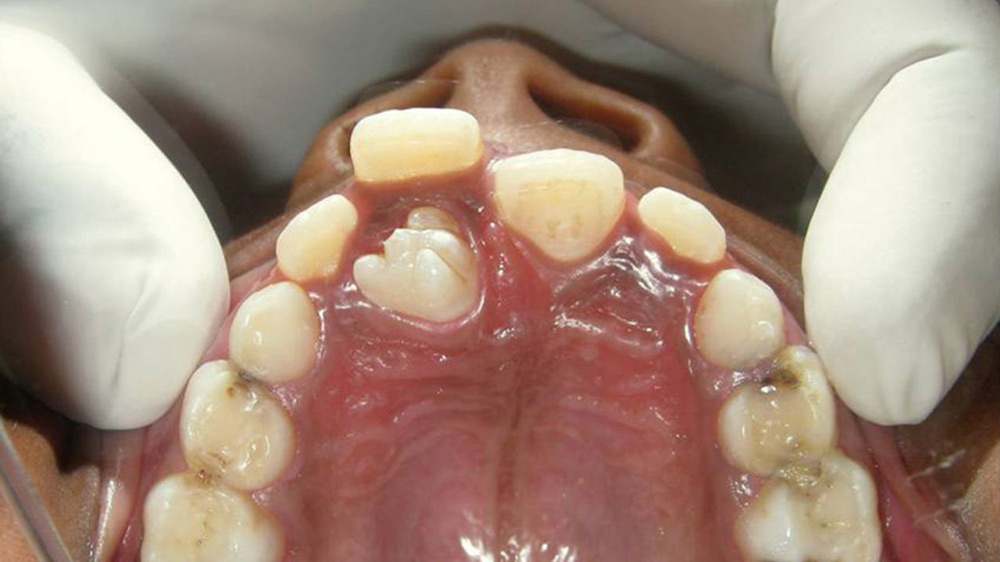
1.Extraction of extra teeth in a simple method
Extraction of extra teeth is the most common treatment. However, it does not mean that the dentist should immediately extract this tooth. The dentist can extract the tooth if it is partially or fully decayed, for instance. In this case, the dentist moves the tooth slowly back and forth to separate it from the root. If the extra tooth is the deciduous tooth of the patient, the dentist chooses the treatment based on the considered case. In most cases, extraction of supernumerary teeth is as simple as common tooth extraction. However, the extra tooth must be extracted by a dental specialist.
2.Surgery for extra teeth removal
If the case is hidden Hyperdontia, the extraction will be harder. Surgery may be needed in some cases. A part of the gum is cut, and an extra tooth is extracted in such cases.
3.Orthodontic treatment for Hyperdontia
Orthodontic treatment is another common method for Hyperdontia. The orthodontist tries to replace the extracted teeth with extra teeth using this treatment for supernumerary teeth except for Mesiodens.
If the case is Mesiodens and central incisors have enough space for development and growth, the orthodontist can do an outpatient surgery on the gum tissue covering the tooth and attach a bracket to it. In this way, the tooth comes out, and dental failure is treated for at least six months. You can contact Dr. Jamilian to learn about orthodontic treatment prices.
If your children have extra teeth, we recommend immediate examination of teeth in dental clinics.
Extra tooth FAQ
Genetic studies indicate that some children are born with Hyperdontia. Also, 1-2% of healthy children may have extra teeth.
An orthodontist must examine children from the age of 6. An orthodontist can diagnose extra teeth and prevent serious problems.
Extra tooth causes congestion and disorder in permanent teeth, speech problems, chewing issues, abnormal face, and delay in eruption of permanent teeth, which may result in more problems if not treated timely.
A child’s extra teeth prevent the eruption of adjacent teeth causing congestion and irregularity of teeth.
Although extra teeth are seen in any region of the jaw, Hyperdontial is much more common in the upper jaw.
When extra teeth are close to the socket of another permanent tooth, root decay may occur.
You should go to the dentist. These teeth must be extracted immediately to prevent more serious problems.
When the eruption of a permanent tooth takes more than six months after the baby tooth falls out, extra teeth may exist. This extra tooth prevents permanent tooth eruption.
In most cases, Mesiodens commonly grow with a conical shape between two other teeth, so can be detected by the patient. However, this tooth is sometimes hidden causing disorder in the eruption of other teeth. In this case, radiography images and dentist visits help to diagnose it.
Mesiodens in the mouth affect the eruption of other teeth causing disorder in the general order of teeth. Therefore, this disorder must be treated ASAP.
Yes, it has a short root although it is characterized by a conical crown.
